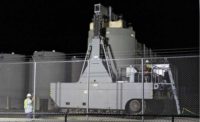
Controversy dogs the Algonquin Incremental Market Project nearly six months after construction began. On Sept. 1, the Federal Energy Regulatory Commission approved the start of construction on the portion of the natural-gas pipeline near the Indian Point Energy Center, a 2000-MW, two-unit nuclear powerplant 35 miles north of New York City. But a variety of opponents are asking the Nuclear Regulatory Commission to order a construction halt on that part of the line.
FERC issued a permit in March 2015 for Algonquin Gas Transmission LLC, a subsidiary of Spectra Energy Corp., to modify its 1,129-mile system, which runs from north of Philadelphia to Boston. The so-called AIM Project will replace or add a total of 37.4 miles of pipe and add compression at six compressor stations for an estimated total cost of $971.6 million. The spread that passes within a half mile of Entergy Nuclear Inc.'s Indian Point plant will replace 20.1 miles, in three segments, of 26-in.-dia pipe with 42-in. pipe. Henkels & McCoy Inc. is performing that work.
Critics claim the Nuclear Regulatory Commission's recommendation to FERC concerning the pipeline's safety was based on a technically deficient review and say an explosion in the pipeline near Indian Point could trigger a meltdown comparable to the Fukushima plant in Japan. Opponents include Greenpeace, Nuclear Information and Resource Service, Riverkeeper, nuclear energy consultant Paul Blanch and numerous state, county and local officials.
"Spectra Energy and the Algonquin Gas Transmission system have been operating safely in the area for more than 60 years," counters Marylee Hanley, director of stakeholder outreach. "Our FERC certificate was issued after a thorough and comprehensive multiyear review that included input from numerous federal, state and local agencies as well as landowners and the public." The pipeline crosses 3,935 ft of Indian Point property and was installed in 1952, she notes. "The FERC environmental impact statement found that the environmental impacts from the project would not be significant, and most are temporary."
"Entergy takes no position on the pipeline itself," says spokesman Jerry Nappi. "But because a portion comes across property at Indian Point, we worked with the pipeline owner to add enhanced protective measures, [such as] increasing the thickness of the pipe, burying the pipe deeper and laying concrete protective mats over the pipe in the vicinity of the powerplant. We then commissioned an independent, expert analysis of potential safety impacts which could result from a pipeline failure. The ...analysis determined the pipeline poses no increased risks to safety at the plant, and experts at the Nuclear Regulatory Commission conducted their own independent analysis and reached the same conclusion."
To resolve what could become an intractable dispute, the Union of Concerned Scientists recommended the NRC have its Advisory Committee on Reactor Safeguards review the risk management of natural-gas pipelines near nuclear powerplants. NRC's spokeswoman says the commission will respond to the critics when it has reviewed all the correspondence.




